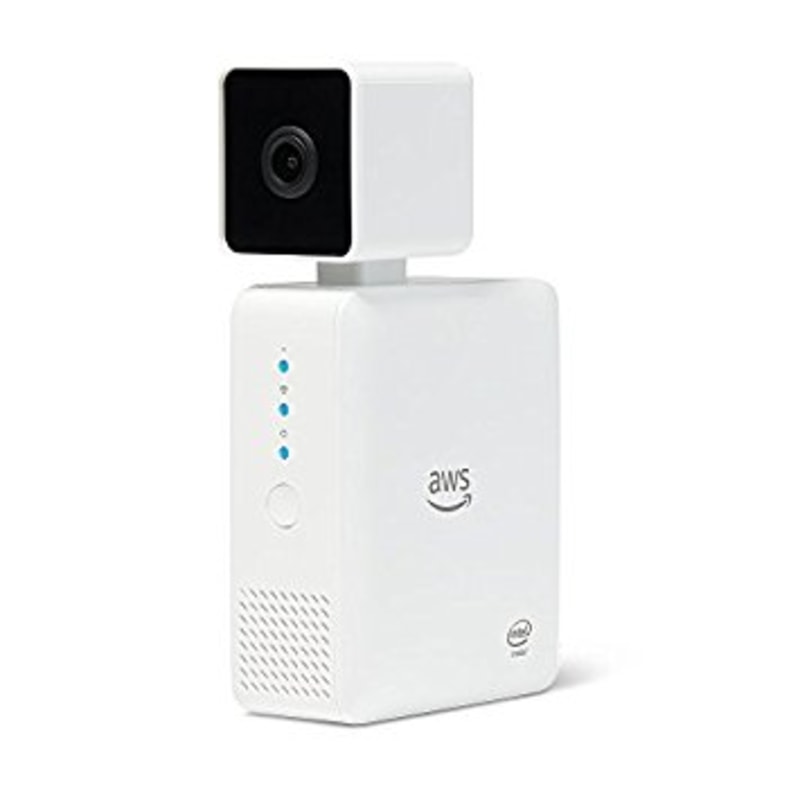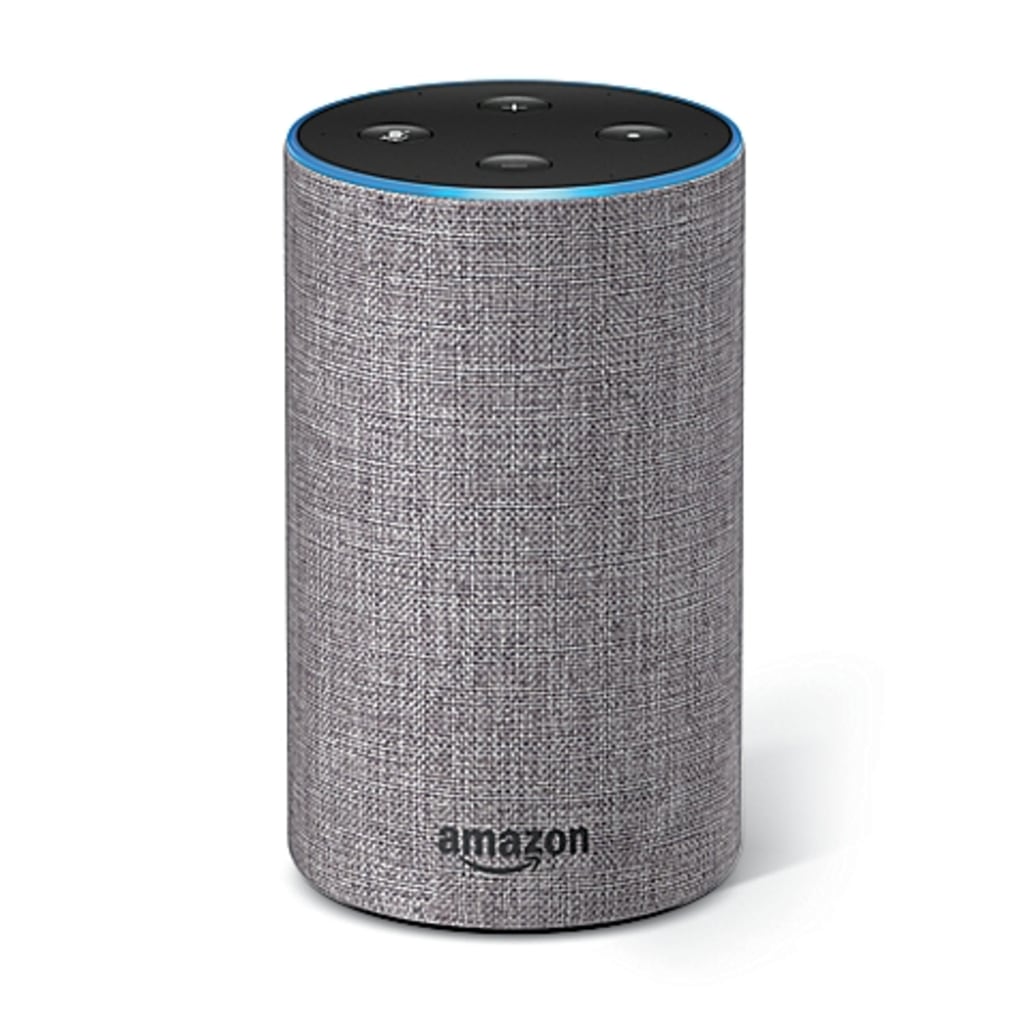It's Amazon's Cloud, We're Just Living in It
Christmas came early for a group of cloud enthusiasts this year. Amazon Web Services’ re:Invent conference, which was held at multiple resorts along the Las Vegas strip, brought enough heat to melt the North Pole with a dizzying number of announcements and new releases.
The annual AWS re:Invent conference is always packed with announcements about new features, products, and capabilities of Amazon's enormous cloud computing platform (read about last year's re:Invent conference). This year, Amazon once again blew minds around the world by releasing dozens of hot new features for AWS.
While Amazon is constantly rolling out new functionality for its core services, re:Invent this year allowed them to announce and release some exciting new products centered around a few emerging technologies:
- AI & machine learning
- Virtual reality
- Video streaming and live broadcast
- Internet-of-things
It's clear that Amazon's breakneck pace of innovation has paid off. Despite rapid competitor growth in 2017, AWS still owns around 35% of the cloud computing market. In this post, we'll talk about new features that we're excited about and how they'll shake things up in the cloud.

Cloud Computing
While the AWS compute service is constantly growing in size and functionality, this year's re:Invent ushered in a huge number of new features. There are, however, a few specific technologies that we can't wait to get our hands on.
AppSync
AppSync is a service we’re particularly excited about here at Cuttlesoft. To start, “AppSync is a fully managed serverless GraphQL service for real-time data queries, synchronization, communications and offline programming features” but one that will allow Cuttlesoft to expand its arsenal for building real-time, offline-first applications.
Until now, Cuttlesoft has used privately hosted CouchDB clusters in harmony with the PouchDB library to achieve offline-first applications. We’ve dabbled with Realm, but haven’t had the pleasure to work with it in an enterprise environment yet. Though the Couch/Pouch solution has served us well, we’re thrilled at the chance to use the responsive API querying abilities of GraphQL in our web and mobile applications that require real-time synchronization or offline data capabilities.
ECS, EKS, & FarGate
Out of the several hundred announcements made at re:Invent, there’s probably none more impactful to the Cuttlesoft team than this. Cuttlesoft has been a building atop the AWS Elastic Container Service (ECS) since its preview in 2015. It’s the backbone of our entire microservices architecture.
We’ve followed the advancement of the service closely and this year, Santa CL-AWS got our letters!
Kubernetes has become the de facto system for automating deployment, scaling and management of containerized applications, and now with the Elastic Kubernetes Service (EKS), AWS allows you to manage your container services and applications with Kubernetes.
This is one area where AWS is actually late to market with a solution. Since Kubernetes was developed at Google, naturally it was a perfect choice for Google Cloud Platform. But even Microsoft’s cloud service, Azure, offers a Kubernetes service: AKS.
Still, we’re excited that we’ll now have the power of Kubernetes as an alternative for managing services currently running on ECS.
Next up on the ECS upgrades is Fargate, a new way to deploy container applications without concern for the underlying infrastructure. Fargate is our answer to a need for being able to rapidly prototype container apps. Amazon says that simply put - “Fargate is like EC2 but instead of giving you a virtual machine you get a container.” We’re on board!
For a quick start on using Fargate, check out Introducing AWS Fargate – Run Containers without Managing Infrastructure.
Machine Learning
Machine learning is obviously a hot topic. Companies are pouring billions into finding out how they can wield these new tools to their advantage. Amazon knows this, and this year they released a trove of new products centered around building and using ML and deep learning applications.
DeepLens

Out of all the announcements from re:Invent 2017, this product stands out as one that will let developers have a bit of fun. DeepLens is a machine-learning-enabled camera that comes pre-trained to detect certain objects. Using the "edge computing" capabilities that Amazon is pushing, developers will be able to create new models and train the camera to detect other types of objects. This lets users experiment and starts new deep-learning projects with ease.
The DeepLens camera is selling for $250 and will ship in April 2018.
Sagemaker
SageMaker is Amazon's attempt to make machine learning and data modeling easier, and more accessible to your average developer. It's designed to take some of the complexity out of the job. Just as AWS offers "managed" versions of popular technologies, Sagemaker will remove much of the legwork required to build and train machine learning models.
A unique element to SageMaker is that it supports all machine algorithms and frameworks (like Apache MXNet and TensorFlow) so developers can use the technologies they’re already familiar with. If developers want to train with an alternative framework, they just bring in their own Docker container, which is, awesome!
SageMaker also makes training and deploying as simple as a single click in the console, and features hosted Jupyter Notebooks (which the Cuttlesoft crew thinks is great).
Artificial Intelligence
Amazon is a leader in the race to power the world's AI-enabled devices, and this year at AWS, they released some new features for their Alexa assistant and Echo devices that have our minds racing with possibilities.

Alexa for Business
In an effort to get their Echo devices beyond the home and into the office, Amazon introduced Alexa for Business. Companies who opt in will be able to manage shared devices and users, and even set up room-specific devices (think Alexa in the break room versus Alexa in the conference room). "Custom Skills" for businesses will let let companies create new skills to fit their needs. Want to design an Alexa skill to help onboard new employees? Now you can.
Amazon Payments Via Alexa
Up until now, the Alexa Skills marketplace has been in a sort of Beta. Developers could create and publish skills, but there weren't a lot of ways for brands to cash in. Now, Skills will be able to accept payments directly via Alexa voice commands. This is a huge step towards making Alexa a "do-it-all platform." Only a few Skill categories will get payments at the to start, but we expect the list to expand quickly.
VR & Video
As more and more web content becomes focused on video and streaming, Amazon wants to make sure it's getting a piece of the pie. To secure its future as a platform for video entertainment, Amazon released a robust suite of video and VR tools for the AWS platform.
Amazon Sumerian
Amazon Sumerian is an interesting product, for Amazon. It's a virtual reality tool, but decidedly not for game development. Instead, the platform is geared towards a more professional setting. Sumerian is a "turnkey" VR solution, with a drag-and-drop editor that seems to be easy enough for non-developers to use. With Sumerian, Amazon is getting ahead of the curve on the software side of VR to make it easier to start using the technology in the workplace.
AWS Media Services
AWS Media Services is an entire suite of new products. It's a collection of five different tools meant to handle the entire video hosting/streaming workflow. Powered by Elemental (purchased by Amazon in 2015), the program is being piloted by sports leagues like the NFL looking for an alternative to cable TV.
IoT
In order to secure its foothold in yet another emerging market, AWS released a suite of tools for managing IoT device fleets and collecting and analyzing data from objects located all over the world.
AWS IoT Device Management
IoT Device Management allows companies to quickly deploy and manage networks of IoT devices through AWS. It lets you register, secure, and update all of your devices en mass, or separate them into groups for specific uses. Overall, it's a foundation on which to build your IoT management infrastructure. We expect that AWS will rapidly roll out new functionalities for IoT Device Management that go beyond updates and security management.
AWS IoT Analytics
Now that you can manage your IoT fleet from the AWS console, you'll also want to be able to collect data and metrics there as well. AWS IoT Analytics does just that. It collects your IoT data, consolidates it in one place, and cleans and analyzes it - automatically. We suspect that as the IoT grows in both volume and importance, that AWS will become a go-to platform for IoT management.
IoT 1-Click
If you're looking for ways to bridge the divide between the digital and the physical, IoT 1-Click is your answer. With 1-Click, developers can program devices like the AWS IoT Enterprise Button (quite the name for a button) to connect with AWS Lambda functions. This means that with the touch of a button, users will be able to deploy a nearly endless array of services.
Final Thoughts
Here, we've written about more than a dozen new services and features announced during just one week for the AWS platform, and we haven't even covered a fraction of the services announced at re:Invent. The fact is, Amazon releases so many new features for their multitude of AWS services that it's nearly impossible for anyone to keep up with all of them. Not even Jeff Barr.
It's this speed of innovation that has made AWS the global leader in cloud computing. Now, with AWS providing platforms for everything from new to established technologies, it's clear that developers will be logging in to the AWS console for the foreseeable future. We can be sure that whatever new technology is on the horizon, Amazon - and AWS - will have their hands on it.
Update - post:Invent
AWS SSO
On December 7, 2017, AWS users got a post re:Invent surprise. AWS announced a Single Sign-On (SSO) service to manage access to multiple AWS accounts and business applications. The new SSO service supports Security Assertion Markup Language (SAML) 2.0, making it possible to extend SSO access to your SAML-enabled application. AWS SSO includes built-in SSO integrations with many business applications, such as Salesforce, Box, and Office 365 - which make building access-management integrations a breeze.
A neat ability for companies that manage multiple AWS resources through AWS Organizations is the SSO integration, which enables you to manage access to all AWS accounts in your organization. One added benefit that could be huge with larger organizations is the centralization of key elements of access management, specifically permissions management and auditing.


